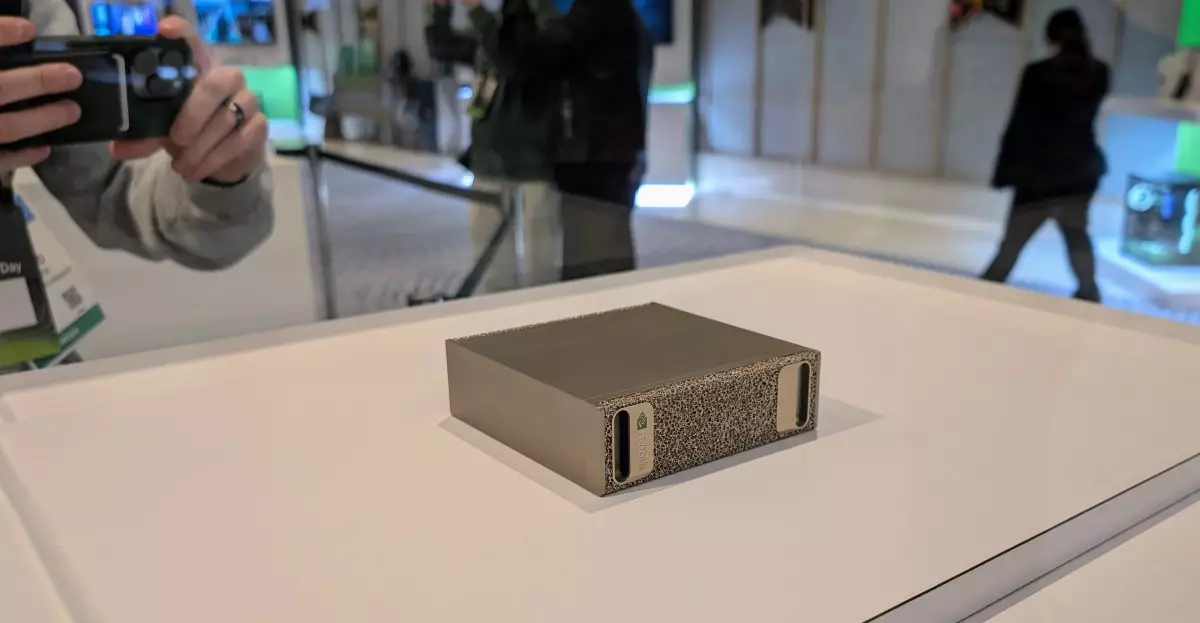In a groundbreaking move for the tech industry, Nvidia’s introduction of the Grace Blackwell platform is set to redefine the landscape of artificial intelligence computing. The announcement that third-party manufacturers can create their versions of Nvidia’s technology has sparked a new race in supercomputing. Leading manufacturers such as Asus, Dell, and HP are poised to enter this arena by developing their own supercomputers powered by Nvidia’s groundbreaking architecture. This initiative not only marks a significant technological advancement but also highlights the burgeoning demand for powerful computing solutions across various industries.
Unpacking the Grace Blackwell Technology
Nvidia’s Grace Blackwell platform is engineered to harness AI capabilities beyond conventional limits. The inclusion of the GB10 super chip in these upcoming mini PCs promises to deliver an impressive 1,000 AI TOPS of processing power, making them suitable for challenging tasks such as machine learning and complex simulations. Aspects such as 128GB of unified memory also allow for enhanced multitasking and improved performance, creating a versatile environment for developers and researchers alike. The technology represents a leap forward from the traditional computing frameworks and aligns well with the pressing needs of sectors relying on AI.
Innovative Designs from Key Players
Among the early entrants, Asus has already unveiled its Ascent GX10 mini PC, showcasing a modern consumer-oriented design devoid of the traditional metallic chassis that characterizes many hardware solutions. Its simplistic yet elegant white plastic body, complete with a decorative top pattern, seems targeted at a broader consumer market. However, as enticing as the design appears, Asus has yet to provide pricing or preorder information. This ambiguity creates an air of uncertainty around its release, potentially giving competitors the edge to carve out their respective niches.
HP follows closely with its HP ZGX Nano AI Station G1n, which takes a more premium approach reminiscent of their sleek Z2 mini workstation. Marked by a more robust design, the G1n is engineered not just for appearance but functionality, allowing it to seamlessly integrate into server racks — an essential feature for businesses and data centers. These practical considerations might elevate HP’s offering above that of others in busy professional environments, signifying a balance between aesthetics and application.
Dell’s Strategic Moves
Dell is positioning itself as a formidable player with its “Dell Pro Max with GB10,” albeit with a simpler design ethos—essentially a plain black box that may not wow aesthetically but offers functional reliability. The plain façade merits scrutiny, particularly when considering how it will blend into an environment often marked by intricate setups of technology. Beyond its mini PC, Dell is also introducing a more robust competition with its Pro Max featuring the GB300. This larger workstation promises a staggering 20 petaflops of AI performance, positioning itself to rival Nvidia’s own offerings head-on.
Just as compelling is the anticipated timing of these releases. Both Nvidia and Dell are looking to make waves in the early summer of 2025, with Nvidia’s DGX Spark available for preorder at a noted price point of $3,000. While the cost associated with high-performance computing systems has historically served as a barrier, the introduction of competitively priced alternatives from Dell, Asus, and HP could democratize access to such advanced technology.
Future Implications and Market Dynamics
The developments surrounding Nvidia’s Grace Blackwell technology signify a pivotal moment for the tech industry; businesses, researchers, and developers are bound to respond dynamically to the available options. The potential emergence of Lenovo as another player developing its own GB10 mini-computer further signifies a growing ecosystem predicated upon Nvidia’s groundbreaking architecture.
As the market gears up for these cutting-edge tools, it’s essential to consider not only the capabilities each manufacturer brings to the table but also how they will cater to diverse user needs. The juxtaposition of performance, design, and practicality will typically dictate the success of these new supercomputers. Additionally, the resulting competition may drive innovative pricing strategies, potentially accelerating advancements in AI, making powerful computing capabilities more accessible than ever before.
As we stand on the brink of this technological revolution, one cannot overlook how the renewed vigor in AI supercomputing may impact industries ranging from healthcare to finance, reshaping the way organizations utilize technology for smarter solutions.

